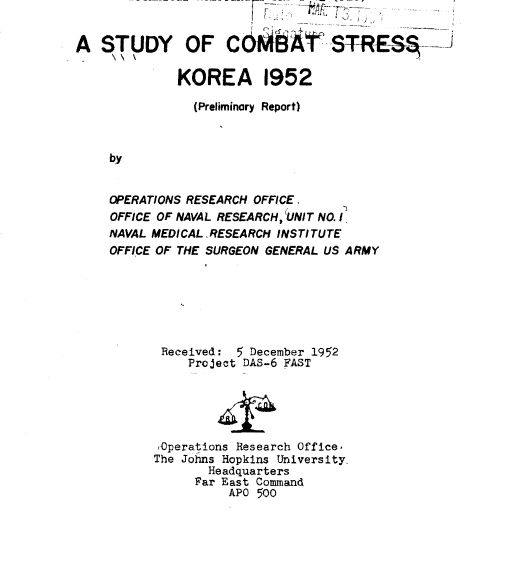
Description
Korean War Combat Stress Study
Timeline of Main Events
- During the Korean War (1950-1953): The Korean War is ongoing, providing the context for the study.
- Field Data Collection in Korea: A field team composed of physiologists, psychologists, and a psychiatrist travels to Korea to gather data from combat infantrymen. This likely occurs at various points during the war as different groups of soldiers become available.
- Data Collection from Reserve Troops: Physiological and psychological tests are conducted on 24 infantrymen stationed in reserve behind the Main Line of Resistance (MLR).
- Data Collection from Assault Troops: Tests are administered to 39 men from an infantry company that had recently led a major assault.
- Data Collection from Recently Deployed Troops: Another group of 13 men, recently returned from five days of active combat, undergoes physiological and psychological testing.
- Data Collection at Camp Omiya, Japan: A control group of 23 soldiers stationed at Camp Omiya, Japan, undergoes similar physiological and psychological tests. This serves as a baseline for comparison with the combat-exposed groups.
- Preliminary Data Analysis: The research team conducts a preliminary analysis of the collected blood and urine specimens and psychological test results.
- Publication of Preliminary Report: The Operations Research Office of Naval Research, Unit No. 1 Naval Medical Research Institute Office of the Surgeon General US Army, publishes a 206-page preliminary report titled “Korean War: A Study of Combat Stress Korea.” This report outlines the initial findings of the research.
Cast of Characters
This source primarily describes a research study and does not explicitly name the individuals involved in conducting the research or the soldiers who participated. Therefore, the “cast of characters” is based on the roles and groups mentioned in the study.
- Combat Infantrymen: This is the central group of individuals being studied. They are the soldiers actively engaged in combat during the Korean War, experiencing the physiological and psychological stresses of warfare. The study focuses on different subgroups:
- Infantrymen in Reserve behind the MLR: These soldiers were not actively engaged in immediate combat but were still in a combat zone.
- Infantrymen from a company that led a major assault: This group represents soldiers who experienced intense combat stress during a specific offensive.
- Infantrymen recently returned from active combat: This group represents soldiers immediately following a period of intense combat engagement.
- Researchers (Physiologists, Psychologists, Psychiatrist): This unnamed group of experts formed the field team responsible for designing and conducting the study. Their roles included:
- Physiologists: Focused on the biological functions and changes in the soldiers’ bodies due to combat stress, likely involved in collecting and analyzing blood and urine specimens.
- Psychologists: Focused on the mental and emotional impact of combat stress, likely involved in designing and administering psychological tests and conducting interviews.
- Psychiatrist: A medical doctor specializing in mental health, likely involved in assessing and understanding the more severe psychological consequences of combat stress.
- Soldiers at Camp Omiya, Japan: This group of 23 soldiers served as a control group, not directly exposed to combat stress, allowing the researchers to compare their physiological and psychological states with those of the soldiers in Korea.
- Operations Research Office of Naval Research, Unit No. 1 Naval Medical Research Institute Office of the Surgeon General US Army: This is the institutional body that sponsored and oversaw the research project and ultimately published the preliminary report. It represents the organizational framework behind the study.
Korean War: A Study of Combat Stress Korea
“A Study of Combat Stress Korea,” the 206-page preliminary report from the Operations Research Office of Naval Research, Unit No. 1 Naval Medical Research Institute Office of the Surgeon General US Army.
Abstract: What are the physiological and psychological changes that occur in combat infantrymen as a result of combat stress?
This question is important in evaluating and in predicting combat effectiveness and in determining measures for relieving combat, fatigue and stress. This report presents a preliminary examination of data gathered by a field team composed of physiologists, psychologists, and one psychiatrist. Physiological and psychological tests were conducted on a group of 23 soldiers at Camp Omiya, Japan; on 24 infantrymen in Korea who were in reserve behind the MLR; on 39 men from an infantry company which led a major assault; and on 13 men from another company that had just returned from five days active combat. Preliminary findings, pending final treatment of the data, show these general conclusions:
Analysis of blood and urine specimens show definite physiological changes occurring as a result of combat.
Physiological disturbances resulting from the effects of psychological stress were found to be dehydration and an almost total absence of certain types of adult white blood cells.
The adrenal gland, particularly the adrenal cortex functions normally in the front-line infantryman not in active combat, but shows a high level of adrenal activity following severe combat stress.
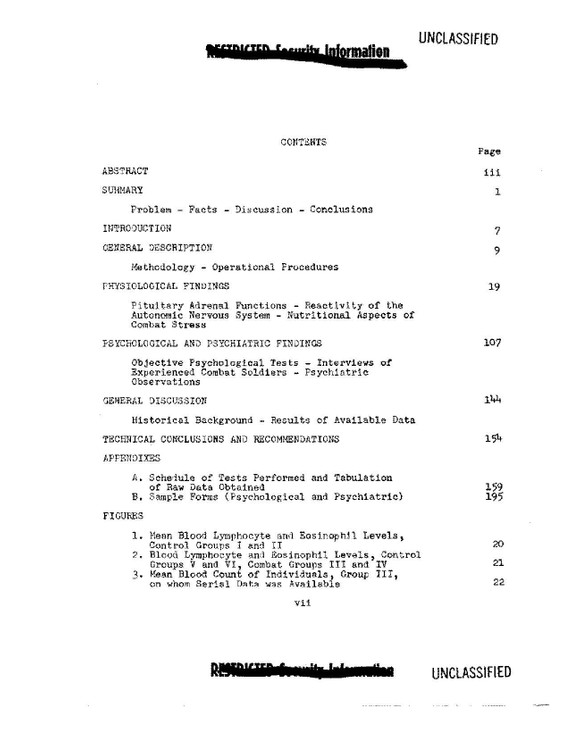

Related products
-
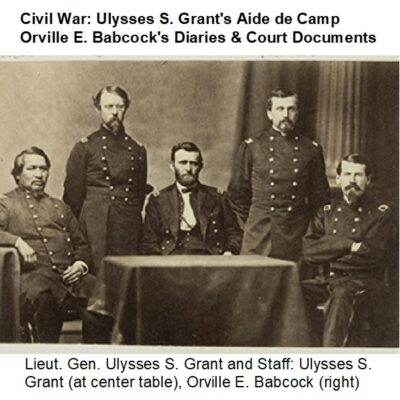
Civil War Ulysses S. Grant’s Aide de Camp Orville E. Babcock’s Diaries & Court Documents
$3.94 Add to Cart -
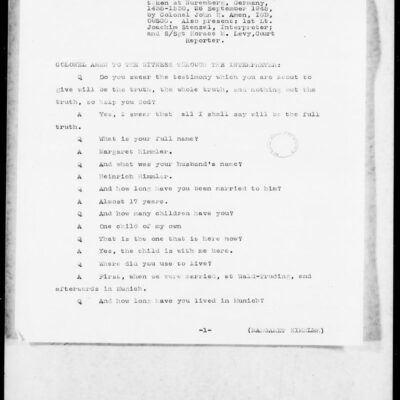

World War II: Interrogation Report and Diary of Margarete Himmler, Wife of Heinrich Himmler
$3.94 Add to Cart -


Operation POPEYE in the Vietnam War
$5.94 Add to Cart -
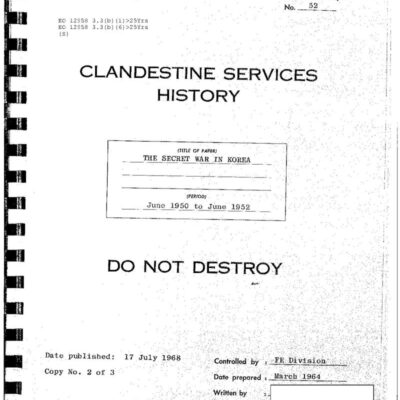

Korean War: CIA Covert Operations History – The Secret Conflict in Korea
$3.94 Add to Cart